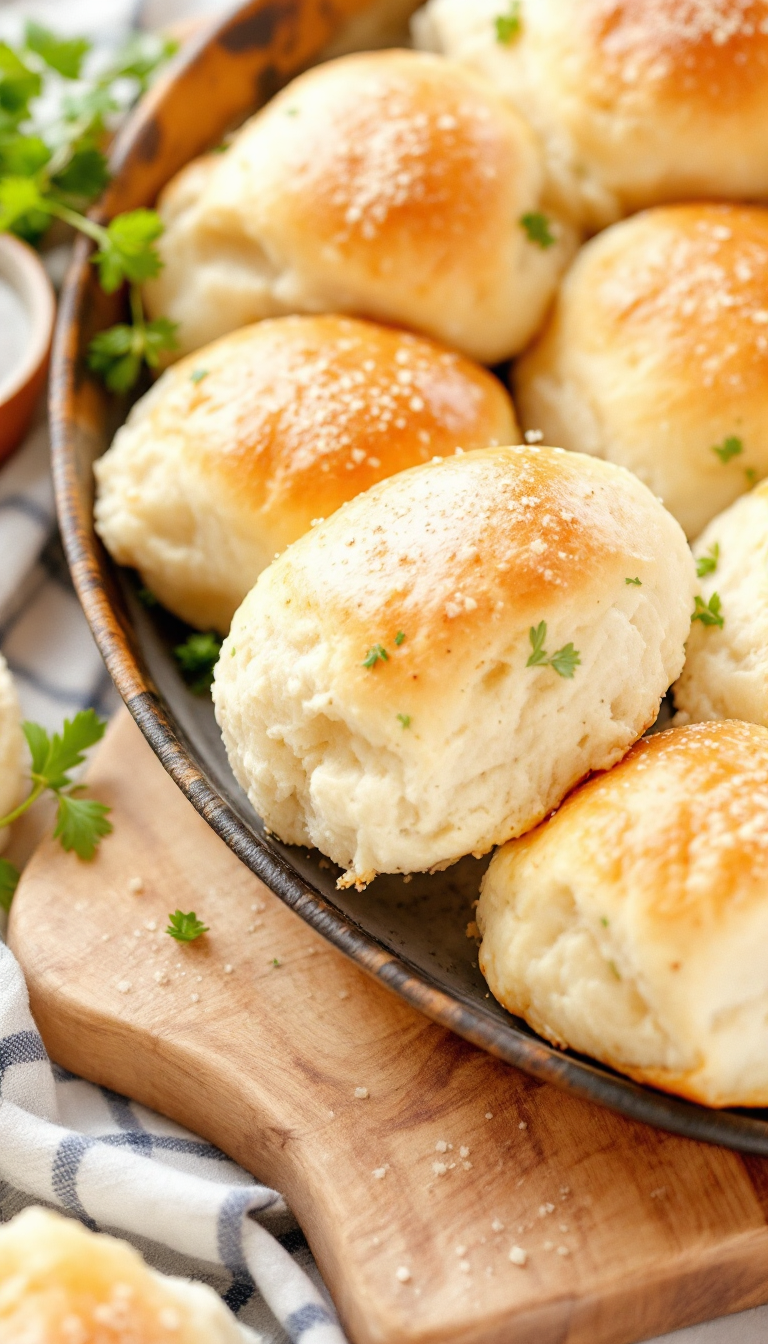There’s just something about the aroma of freshly baked bread that instantly transports me to a cozy French café, even if I’m just standing in my kitchen in mismatched socks. These soft and chewy French bread dinner rolls—oh, they’re like little pillows of joy! —are the kind of comfort food that wraps you up in a warm hug, especially on those chilly evenings when the world feels just a tad too big.
I remember the first time I made them; the scent filled every nook of my home, and my cat, Whiskers, seemed more than intrigued by the whole process. These rolls, with their slightly crisp crust and tender interior, are perfect for mopping up hearty stews or simply slathering with a generous pat of butter. And let’s be honest, who can resist tearing into one before they’ve even cooled?
It’s like trying to resist the lure of a good Netflix series after a long day—impossible. So, whether you’re planning a fancy dinner or just indulging in a quiet night in, these rolls promise to be the star of the meal, leaving you with a contented sigh and maybe a few crumbs on your shirt.
Steps
- Combine warm water, yeast, sugar, oil, salt, and 2 cups of flour in a mixing bowl. Gradually add the remaining flour while mixing until the dough pulls away from the bowl’s sides, then knead for 4-5 minutes using a mixer or 7-9 minutes by hand.
- Test the dough for stickiness by rolling a small piece into a ball; if it doesn’t stick to your hands, it’s ready. If it sticks, add a bit more flour gradually. Place the dough in a greased bowl, cover it, and let it rise until it doubles in size, about 1-2 hours.
- Lightly punch down the risen dough and transfer it to a greased countertop. Divide the dough into 12 equal pieces, approximately 2.75 ounces each, and shape them into smooth balls.
- Arrange the dough balls in a greased 9X13-inch pan or on a lined baking sheet, leaving space between them. Cover with greased plastic wrap and let them rise until puffy and doubled in size, around 45 minutes to 1 hour.
- Preheat the oven to 400 degrees Fahrenheit. Bake the rolls for 15-17 minutes until they are golden brown and cooked through.
- Once removed from the oven, immediately brush the tops of the rolls with butter for extra flavor and softness.
Ingredients
- 1 ½ cups warm water
- 1 tablespoon instant or active dry yeast
- 2 tablespoons granulated sugar or honey
- 2 tablespoons canola oil, vegetable oil, or another neutral-flavored oil (olive oil works too)
- 1 teaspoon salt
- 3 ½ to 4 cups (497 to 569 grams) all-purpose or bread flour, more or less depending on need
Nutritional Values
Calories: 1680kcal | Carbohydrates: 348g | Protein: 60g | Fat: 12g | Saturated Fat: 12g | Sodium: 2364mg | Fiber: 24g | Sugar: 12g
FAQ
- Can I use a hand mixer to make the dough?
- Yes, you can use a hand mixer to combine the ingredients, but it’s recommended to knead the dough by hand or use a stand mixer for best results, as the dough needs thorough kneading to achieve the desired texture.
- What should I do if my dough is too sticky?
- If your dough remains sticky after initial mixing, gradually add more flour, a tablespoon at a time, until the dough forms a soft ball that doesn’t stick excessively to your hands.
- Can I make a whole wheat version of these rolls?
- Absolutely! You can substitute part or all of the all-purpose flour with whole wheat flour. There is also a dedicated whole wheat recipe available for a perfect fluffy texture.
- How can I store the rolls if I make them in advance?
- Once baked and cooled, these rolls can be stored in the freezer. Place them in a zip-lock bag and freeze. When needed, thaw them at room temperature or reheat them in the microwave.
- Is it necessary to use a specific type of yeast?
- Both instant and active dry yeast can be used for this recipe. If using active dry yeast from packets, note that it may take slightly longer for the dough to rise compared to using bulk yeast.
Tips
- Adjust Flour Based on Dough Texture: Instead of stressing over the exact amount of flour, focus on the dough’s texture. It should feel soft and slightly tacky but not overly sticky. Feel free to add more flour gradually if needed, but be cautious not to overdo it, as too much flour can ruin the fluffiness of your rolls.
- Use a Kitchen Scale for Uniformity: Weighing the dough ensures uniform roll sizes, contributing to even baking. Aim for each piece to weigh around 2.6 to 2.7 ounces for consistent results.
- Let the Dough Rise Right in the Mixing Bowl: Save time and effort by letting the dough rise in the mixing bowl itself. Once it has doubled in size, it’s ready to be shaped into rolls.
- Freeze Baked Rolls for Later Use: Consider doubling or tripling the recipe as these rolls freeze exceptionally well. After baking and cooling, store them in a freezer bag. When needed, thaw at room temperature or reheat frozen rolls in the microwave for a few minutes.
Equipment
- Kitchen Scale – For weighing the dough to ensure uniform roll sizes.
- 8-Quart Container (or 4-Quart version) – For letting the dough rise. Lids may need to be purchased separately.
- Silicone Pastry Brush – For brushing butter on the rolls.
- Bench Knife (Dough Scraper) – For portioning out the dough.
- Stand Mixer – While a Bosch Universal or KitchenAid is recommended, any stand mixer with a dough hook attachment would suffice.
- making process.


